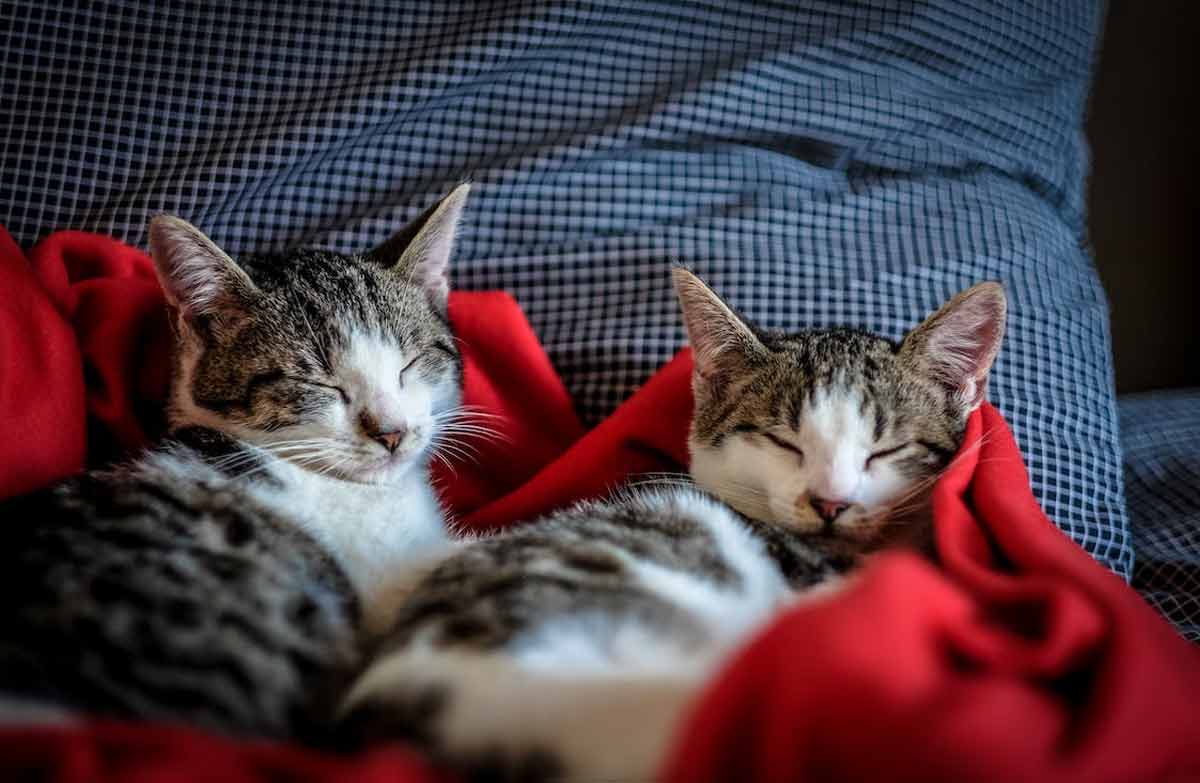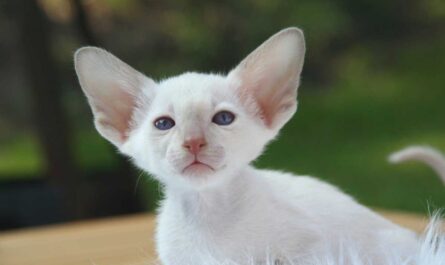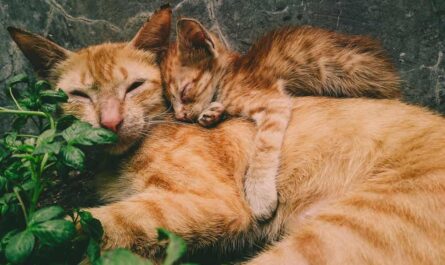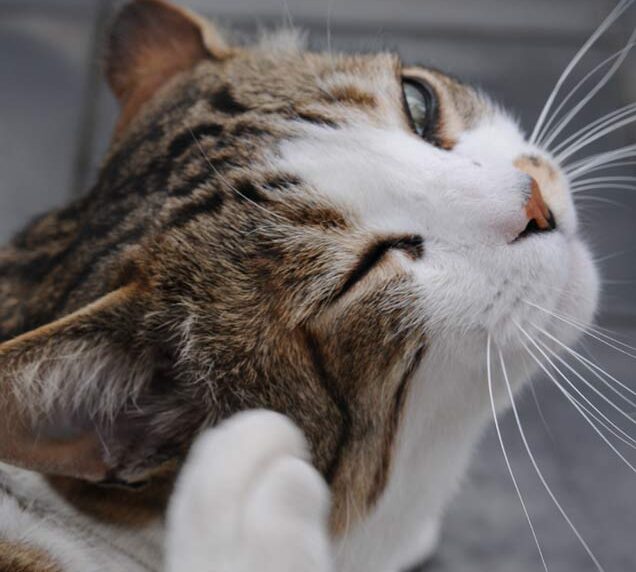Why is my cat sticking his tongue out like a dog? Have you ever been playing with your cat, their toy dangling precariously just out of reach, only to be met with the sight of a tiny pink tongue inexplicably sticking out? It’s a scene both comical and perplexing. Our canine companions might stick out their tongues in a panting display of exertion, but what does it mean when a cat does the same? Fear not, curious cat owners! This article delves into the fascinating world of feline communication, shedding light on the mystery of the protruding tongue.
Unveiling the Reasons: A Purr-fectly Informative Journey
Cats are masters of nonverbal communication, expressing themselves through body language, vocalizations, and yes, even the occasional tongue thrust. There are several reasons why your feline friend might be sporting a “blep” (the adorable internet term for a cat’s tongue sticking out).
Reading Between the Bleps: Context is Key
While a protruding tongue can offer clues about your cat’s state of mind, it’s important to consider the context of the situation. Is your cat playful and engaged, or lethargic and withdrawn? Are there other accompanying behaviors, like excessive grooming or changes in litter box habits? By piecing together these puzzle pieces, you can gain a deeper understanding of what your feline friend is trying to communicate.
When in Doubt, Seek Professional Help
If your cat’s tongue-sticking-out behavior is persistent, accompanied by other concerning symptoms, or seems unusual, it’s always best to consult your veterinarian. They can rule out any underlying health issues and guide you in caring for your furry companion.
Beyond the Derp: Unveiling the Mystery of Your Cat’s Tongue Teasers
Have you ever looked over at your feline friend and caught them gazing back with their tongue poking playfully out? This comical sight, often referred to as “blepping,” can leave us scratching our heads and wondering what’s going on inside that fluffy mind. Fear not, curious cat companions, for this section will delve into the fascinating reasons behind a cat’s extended tongue.
The Great Groom: A Cat’s Tongue – A Multipurpose Marvel
Cats are renowned for their meticulous grooming habits. Their tongues, equipped with tiny, rough barbs called papillae, act as a natural comb and brush. They use these sandpapery tongues to meticulously remove dirt, debris, and pesky tangles from their fur. While diligently grooming, a cat might momentarily extend their tongue to reach a tricky spot behind an ear or beneath a paw. This brief tongue protrusion is simply part of their meticulous cleaning routine.
Tasting the World: A Sensory Safari with a Feline Twist
Just like human babies who explore the world by putting things in their mouths, cats can also use their tongues to investigate unfamiliar objects or surfaces. This investigative lick might involve a new toy, a recently arrived houseplant (remember, some plants are toxic to cats, so always be cautious!), or even your unsuspecting hand. It’s their way of gathering information about the world through taste and texture.
H3: The Sensory Sleuth: Unveiling the Flehmen Response
Have you ever witnessed your cat curling their upper lip in a peculiar grimace, accompanied by a protruding tongue? This intriguing behavior is known as the Flehmen response, and it’s a fascinating display of a cat’s superior sense of smell. When a cat encounters an interesting scent, like another feline’s pheromones or a particularly enticing food aroma, they might activate the Flehmen response. By curling their lip and extending their tongue, they channel the scent particles to a special olfactory organ located in the roof of their mouth, allowing them to analyze the scent in greater detail. So, the next time you see your cat sporting this unusual expression, know that they’re simply conducting a deep olfactory investigation!
Not Always Fun and Games: When a Protruding Tongue Signals Discomfort
While a fleeting tongue extension is often a normal part of a cat’s behavior, it’s important to be aware that it can also indicate potential discomfort. If your cat is sticking out their tongue frequently, accompanied by other concerning signs like nausea, vomiting, or loss of appetite, it might be a sign of an underlying health issue. Similarly, if your cat seems lethargic or exhibits signs of pain when their mouth is touched, it could be related to dental problems.
When in Doubt, Seek Professional Help: If you’re concerned about your cat’s frequent tongue protrusion or any other behavioral changes, remember, it’s always best to err on the side of caution. Schedule a visit with your veterinarian to rule out any medical causes.
Dental Drama: A Brief Note on Oral Health
Although not the most common reason for tongue protrusion, occasional discomfort caused by dental problems shouldn’t be entirely disregarded. Dental issues like gingivitis or inflamed gums can irritate your cat’s mouth, leading them to stick out their tongue in an attempt to alleviate the discomfort. Regular veterinary checkups and proper dental care for your cat are crucial for maintaining their overall health and well-being.
By understanding the various reasons behind your cat’s playful tongue displays, you can gain valuable insight into their mood, behavior, and even their sense of smell! So next time you witness your feline friend sporting a little tongue, remember, it might not be just a silly goof – it could be a window into their fascinating world of exploration, communication, and sensory perception.
Decoding the Mlem: Understanding the Flehmen Response
Have you ever caught your cat sticking their tongue out in a peculiar way, almost like a canine mid-pant? This unusual behavior, often referred to as the “mlem” by internet enthusiasts, is actually a fascinating feline response called the Flehmen response. It’s not a sign of sass or a desire to mimic our canine companions; it’s a sophisticated way for cats to analyze scents and gather important information about their surroundings.
A Deeper Sniff: Unveiling the Power of the Flehmen Response
When a cat performs the Flehmen response, they’re essentially taking a deeper sniff than a regular inhalation allows. Here’s the science behind this curious act:
- The Initial Sniff: Cats have a keen sense of smell, many times stronger than our own. During a normal sniff, they take in scent molecules through their nose.
- The Mlem Maneuver: After the initial sniff, if a particular scent piques their curiosity, they’ll extend their tongue out in a somewhat comical fashion. This extension curls the tongue upwards, creating a small scoop-like shape.
- Transferring Scents: As the tongue protrudes, it brushes against a special organ located on the roof of their mouth called the Jacobson’s organ. This organ contains specialized receptors that can analyze scent molecules in much greater detail than the regular nasal cavity.
- Enhanced Understanding: By transferring scent molecules to the Jacobson’s organ, cats gain a more nuanced understanding of the aroma. It’s like taking a magnifying glass to a scent, allowing them to decipher complex information.
Pheromone Power: Decoding the Chemical Messages
The Flehmen response is particularly useful for cats in detecting pheromones, which are chemical signals released by other animals. These invisible messages can convey a wealth of information, including:
- Emotional State: Cats may use the Flehmen response to detect the emotions of other animals, such as fear or aggression, based on the pheromones they emit. This helps them navigate social interactions and potential threats.
- Mating Matters: For unneutered male cats, the Flehmen response plays a crucial role in detecting pheromones released by females in heat. By analyzing these chemical signals, they can identify potential mates.
- Marking Territory: Cats often leave scent messages by rubbing their bodies against objects. The Flehmen response allows them to “read” these messages left behind by other cats, gaining insights into who has been in their territory.
While pheromones are a significant reason for the Flehmen response in cats, it’s not the only one. They may also use this technique to analyze unfamiliar scents encountered during exploration, better understand food sources, or even decipher the emotional state of their human companions!
Beyond Cats: A Universal Language of Scents
The Flehmen response isn’t exclusive to our feline friends. Other animals, such as dogs and horses, also exhibit this behavior. It highlights the importance of scent in the animal kingdom, acting as a silent language that allows creatures to communicate and gather information about their world.
So, the next time you see your cat sporting the “mlem,” don’t be surprised – they’re simply conducting a sophisticated olfactory investigation!
Context is Key: Decoding Your Cat’s Tongue Talk
Have you ever looked over at your feline friend and found them gazing back with their tongue playfully peeking out? This curious behavior can leave us scratching our heads, wondering what our furry companions are trying to communicate. The truth is, a protruding tongue from your cat can hold a variety of meanings, depending on the context. Let’s delve deeper into the fascinating world of feline body language and decipher what your cat might be saying with that little pink extension.
Reading the Whole Story: Body Language Matters
Just like us humans, cats communicate through a complex combination of vocalizations, facial expressions, and body language. To truly understand what your cat’s protruding tongue signifies, it’s crucial to consider the bigger picture. Observe their overall posture, tail position, and facial expressions alongside the tongue action.
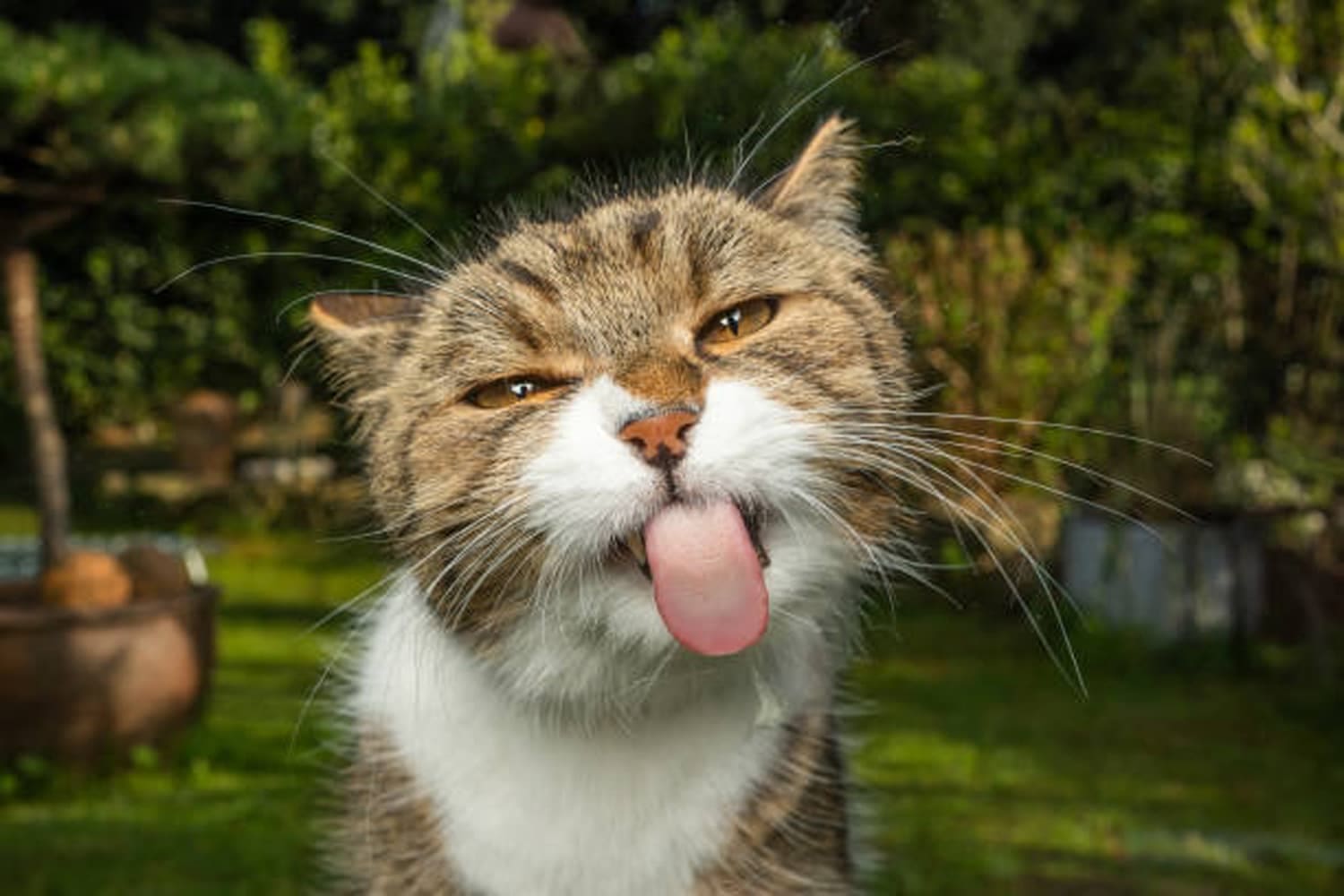
A Sign of Contentment: The Relaxed Tongue Flicker
Imagine this scene: your cat is curled up in a sunny spot, basking in the warmth. They’re gently grooming themselves, and a hint of pink peeks out from their slightly open mouth. This relaxed tongue flicker is a telltale sign of a happy and content kitty. In this context, the extended tongue isn’t necessarily focused on anything specific; it’s more of a subtle expression of feline bliss.
Playful Curiosity: The Tongue and the Toy
Ever noticed your cat batting at a feathery toy with their paw, tongue playfully lolling out? This is a classic display of playful curiosity. The protruding tongue might indicate a mix of focus and excitement as your cat stalks and investigates the enticing toy. Think of it as a playful “blep” that signifies their engagement in the fun.
When to Worry: Excessive Tongue Protrusion and Other Symptoms
While a fleeting tongue flick is usually nothing to worry about, there are situations where excessive tongue protrusion combined with other symptoms might warrant a visit to the veterinarian. If your cat is sticking out their tongue frequently, drooling excessively, exhibiting signs of nausea (frequent licking of lips), or showing any other concerning behaviors, it’s best to err on the side of caution and seek professional advice. Early detection and treatment are key to maintaining your cat’s health and well-being.
Remember: This article provides a general overview of feline behavior. If you have any concerns about your cat’s health or well-being, always consult your veterinarian for personalized advice.
Context is Key: Decoding Your Cat’s Tongue Talk
Have you ever looked over at your feline friend and caught them with their tongue poking out in a seemingly uncharacteristic way? Does this playful display remind you more of a goofy dog than a dignified cat? While it might look comical, a cat sticking its tongue out can actually communicate a variety of things. The key to understanding this furry mystery lies in deciphering the context behind the tongue action.
Reading the Body Language: Beyond the Tongue Tip
Cats are masters of nonverbal communication, and their body language speaks volumes. To truly understand what your cat’s protruding tongue means, it’s crucial to consider their overall demeanor.
-
Signs of Relaxation: If your cat is curled up in a sunny spot, contentedly grooming themselves with their tongue slightly extended, this is a classic picture of feline bliss. The relaxed posture, gentle grooming motions, and soft tongue peek all point towards a happy and comfortable cat.
-
Playful Exploration: Does your cat bat at a feathery toy with their paw, tongue playfully darting out in anticipation? This is a clear sign of playful curiosity and engagement. The tongue extension becomes part of the hunting instinct, a way for your cat to assess the “prey” and prepare for a playful pounce.
Remember: A relaxed body, happy purrs, and playful swats of the tail often accompany these positive tongue displays.
When a Tongue Extension Signals Something More
While a quick tongue dart can often be a sign of contentment or playfulness, there are instances where it might indicate something more. Here’s where observing other accompanying behaviors becomes even more important:
-
Excessive Tongue Protrusion: If your cat’s tongue is constantly lolling out, especially if it’s accompanied by drooling, panting, or difficulty breathing, it might be a cause for concern. These symptoms could indicate nausea, dental issues, or even heatstroke.
-
Stress Signals: In some cases, a cat sticking out its tongue can be a sign of stress or anxiety. Look for flattened ears, dilated pupils, or a hunched posture alongside the tongue protrusion. If you suspect your cat is stressed, try to identify the source of the anxiety and create a calmer environment for them.
Remember: If you’re ever unsure about your cat’s behavior, particularly if it’s accompanied by concerning symptoms, it’s always best to consult your veterinarian for a proper diagnosis.
By considering your cat’s body language and overall demeanor alongside the tongue protrusion, you’ll be well on your way to deciphering their unique form of communication. After all, a little context goes a long way in understanding the fascinating world of our feline companions.
When to Worry: Recognizing Signs of a Health Concern
The sight of your cat sticking out their tongue can be a funny, endearing quirk. But have you ever wondered if there’s a deeper meaning behind this curious behavior? Most of the time, a feline “blep” (the internet’s adorable term for a cat’s tongue sticking out) is nothing to worry about. However, there are some situations where it might be a sign of an underlying health issue. Let’s delve into how to differentiate between normal cat behavior and a potential health concern.
Frequency and Duration: A Tale of Two Tongues
The key to deciphering your cat’s tongue protrusion lies in observing the frequency and duration. An occasional brief extension of the tongue, especially after grooming or during a playful moment, is perfectly normal feline behavior. Think of it as your cat taking a quick taste of the world, or perhaps just forgetting to retract their tongue for a moment.
However, if your cat’s tongue seems to be perpetually stuck out, or if they’re exhibiting frequent and prolonged episodes of tongue protrusion, it might be a cause for concern. This constant protrusion can make it difficult for them to eat, drink, or groom themselves comfortably.
Accompanying Symptoms: Putting the Pieces Together
While a protruding tongue on its own might not be a cause for alarm, it’s important to consider if there are any other symptoms accompanying this behavior. Here are some red flags to watch out for:
- Digestive Issues: Vomiting, diarrhea, or constipation could indicate an underlying digestive problem that might be causing your cat discomfort, leading them to stick out their tongue in response.
- Changes in Appetite: A sudden loss of appetite or a noticeable increase in hunger can be signs of various health issues. If your cat’s tongue protrusion coincides with changes in their eating habits, consult your veterinarian.
- Lethargy or Listlessness: A healthy cat should be full of energy and curious about their surroundings. If your cat seems unusually tired, disinterested in playtime, or sleeps excessively, alongside the tongue protrusion, it’s best to seek professional advice.
- Dental Problems: Oral health issues like gum disease or difficulty chewing can sometimes cause cats to stick out their tongue in an attempt to alleviate discomfort.
If you notice any of these symptoms along with your cat’s tongue protrusion, it’s important to schedule an appointment with your veterinarian for a proper diagnosis and treatment plan.
Seeking Veterinary Advice: When in Doubt, Get Checked Out
Remember, you know your cat best. If their tongue protrusion seems unusual, excessive or coincides with other concerning symptoms, don’t hesitate to err on the side of caution and consult your veterinarian. A quick checkup can provide peace of mind and ensure your feline friend receives any necessary medical attention.
Early detection and treatment are crucial for maintaining your cat’s health and well-being. Your veterinarian can perform a thorough examination, discuss your observations, and determine if there’s an underlying cause for your cat’s extended tongue.
Empowering Cat Parents: By understanding the normal range of feline behavior and being observant of any changes, you can be a responsible and proactive cat parent. So, the next time you see your cat sticking out their tongue, take a moment to assess the situation. If it’s a fleeting blep, enjoy the adorable quirk! But if it seems persistent or accompanied by other symptoms, a trip to the vet might be the best course of action.
The Never-Ending Curiosity: Further Exploration of Feline Behavior
Cats are captivating creatures, renowned for their independence, grace, and sometimes, rather perplexing behaviors. One such head-scratcher is the occasional sight of your feline friend sticking their tongue out in a seemingly dog-like manner. While this behavior can be amusing, it’s important to understand the potential reasons behind it. This section delves deeper into the fascinating world of feline behavior, exploring the science of scents and the unique language cats use to communicate. How AI, ChatGPT maximizes earnings of many people in minutes
The Science of Scents: A Deeper Look at the Flehmen Response
Have you ever noticed your cat sniffing something intently, then curling their upper lip back in a grimace-like expression while their tongue protrudes slightly? This peculiar behavior is known as the Flehmen response, and it’s a fascinating glimpse into the world of feline scent detection.
The Flehmen response is triggered by the presence of particularly interesting or strong smells. When a cat encounters such an aroma, they take a deep sniff, drawing odor molecules into their Jacobson’s organ located on the roof of their mouth. By extending their tongue and curling their upper lip, they channel these odor molecules towards Jacobson’s organ, allowing for a more detailed analysis of the scent.
Scientific Exploration Continues: The exact function of the Flehmen response in cats is still being explored by scientists. Some theories suggest it plays a role in feline communication, particularly related to sexual maturity and social interactions. Other researchers believe it might help cats identify food sources or potential threats. While the full picture remains under investigation, the Flehmen response offers a fascinating window into the importance of smell in a cat’s world.
The Unique Cat Language: Decoding Your Feline Friend
Cats may not bark or meow elaborate sentences, but they are certainly not silent communicators. They possess a rich and complex language comprised of subtle body language cues, vocalizations, and even scent markings. Learning to “speak cat” can significantly enhance your bond with your feline companion.
Beyond the Meow: The familiar meow is just one facet of a cat’s vocal repertoire. A purr can signify contentment or a request for attention, while a low growl indicates irritation or fear. Pay attention to the variations in your cat’s meows, hisses, and chirps, as they can offer valuable clues about their emotional state.
Body Language Speaks Volumes: A cat’s tail position tells a story. A relaxed, upright tail indicates contentment, while a swishing tail can signal agitation or playfulness. Flattened ears often communicate fear or anxiety, while a puffed-up posture suggests a defensive stance. By observing your cat’s body language, you can anticipate their needs and avoid misunderstandings.
Understanding Context: It’s important to consider the context when interpreting your cat’s behavior. For instance, a protruding tongue during playtime might simply be a playful expression, while the same action combined with flattened ears and hissing could indicate fear. Cat accessories on Amazon
By familiarizing yourself with the science of scents, the Flehmen response, and the nuances of feline communication, you gain a deeper appreciation for your cat’s unique way of interacting with the world. Remember, a little observation goes a long way in strengthening the bond between you and your furry friend.
Final thought: Celebrating the Mystery of the Mlem
Cats are a constant source of amusement and wonder. Their quirky habits, including the occasional tongue display, are part of what makes them so endearing. By understanding the reasons behind this behavior, we can strengthen the bond with our feline companions and provide them with the care they deserve. Remember, to appreciate your cat’s unique personality, and consult your vet if you have any concerns. After all, a happy cat with a healthy tongue (tucked away or not) is a happy home!
Other Interesting Articles
- How to Help Your Cat Overcome Fears in 13 Strategic Steps
- 13 Easy Tricks To Teach Your Cat: Basic Feline Training Guide
- How To Train Your Cat: 15 Easy Steps To Teach New Things
- Why Do Cats Have Tails? 4 Fun Facts You Didn’t Know
- 16 Simple Ways To Establish A Stronger Bond With Your Cat
- How To Train Your Cat/Kitten To Sit: Steps, Command, Guide
- Cat Giving Birth: From Your Feline Pregnancy to Kitten Care
- Fading Kitten Syndrome: Age, Causes, Symptoms, Treatment
- Kitten Bottle Feeding: Chart, Tips, Recipe, Challenges, Guide
- Cat Pregnancy: Timeline, Signs, Labor, Behavior, Stages
- 16 Silent Killers of Cats Every Pet Owner Must Be Aware Of
- Do Mother Cats Discipline Their Kittens? A Guide To Owners
- How To Take Care of A Kitten 6 Weeks Old: A 7-Step Guide
- How To Tell If Your Cat is Trying to Hurt You: A To-Do Guide
- How To Tell If Your Cat Has Tapeworms: What You Can Do
- How To Tell If My Cat is in Pain After Neutering: What To Do
- How To Get A Cat To Trust You Fast: Signs, Tips, Techniques
- 12 Signs Your Cat is a Boy: Tips To Distinguish A Male Cat
- Single Kitten Syndrome: Age, Signs, Symptoms, Treatments
- How To Tell If Your Cat Can’t See Well: What You Can Do
